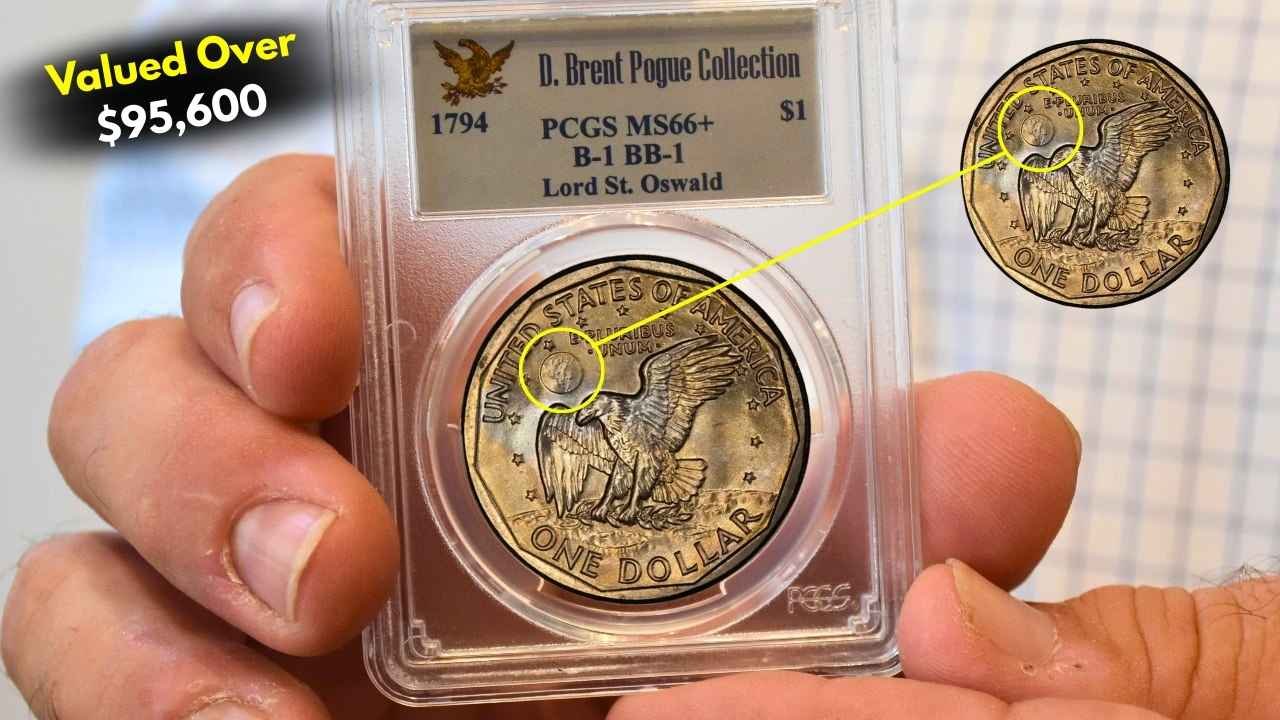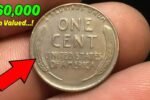Join on WhatsApp
Get the latest updates directly on WhatsApp – motivation, news & more!
Coin collecting is not only a popular hobby but also a potential goldmine for those who know what to look for. Many people overlook the fact that some coins still in circulation carry significant value due to rarity, errors, or historical significance. While most coins are worth only their face value, a few exceptional examples can fetch prices far exceeding expectations, sometimes over $95,600. These coins may be hiding in loose change, old coin jars, or even in collections handed down from previous generations. Understanding which coins to look for and how to identify them is key for both casual collectors and serious investors.
1943 Copper Lincoln Penny
One of the most famous rare coins still occasionally found in circulation is the 1943 copper Lincoln penny. During World War II, the U.S. Mint switched to zinc-coated steel pennies to conserve copper for wartime needs. However, a few copper planchets were mistakenly used, producing pennies that are extremely rare today. These copper pennies weigh slightly more than steel pennies and are non-magnetic, which helps in identification. Depending on condition and provenance, a genuine 1943 copper penny can fetch upwards of $95,000, with some examples reaching six-figure sums at auction.
1955 Doubled Die Lincoln Cent
The 1955 Lincoln cent features one of the most iconic minting errors in American history: the doubled die obverse. This error occurs when the coin die imprints the design twice, creating noticeable doubling in inscriptions like “LIBERTY” and “IN GOD WE TRUST.” While many coins from 1955 are common, a doubled die Lincoln cent is instantly recognizable and highly prized. High-grade examples can sell for tens of thousands of dollars, with exceptionally preserved coins exceeding $100,000. Collectors often inspect their pennies from 1955 carefully to spot these rare variations.
1942/1 Mercury Dime
The 1942/1 Mercury dime is a classic example of an overdate error, where a 1941 die was repurposed incorrectly, leaving traces of the previous year visible beneath the 1942 date. This subtle but significant detail makes it one of the rarest and most valuable dimes in circulation. The coin’s historical significance, combined with its scarcity, can drive prices well over $95,000, depending on the grade and condition. Experienced collectors use magnification tools to identify the overlapping numbers and confirm authenticity before investing.
1916-D Mercury Dime
Another Mercury dime that commands high prices is the 1916-D, produced at the Denver Mint. This dime had a very low mintage, making it one of the rarest coins of the series. Its distinctive design features Liberty with a winged cap on the obverse and a fasces with olive branch on the reverse. Because of its limited numbers and strong collector demand, the 1916-D Mercury dime can easily reach or surpass $100,000 in excellent condition. Coins from this year are often carefully preserved by collectors who understand their rarity and significance.
1937-D Three-Legged Buffalo Nickel
The 1937-D Buffalo nickel with the so-called “three-legged” error is one of the most visually striking coins in circulation. During production, excessive polishing of the die caused one of the bison’s legs to appear missing. The result is a rare error coin that is highly sought after by collectors. Depending on the coin’s condition and provenance, this Buffalo nickel can sell for over $95,000, with pristine examples reaching higher amounts. Its distinct appearance makes it relatively easy to spot once collectors are aware of the error.
1942 Steel Penny with Rare Die Variety
While most 1942 pennies are zinc-coated steel, some feature unusual die variations that make them particularly valuable. These die varieties include slight misalignments or doubled features on the obverse or reverse. Even though steel pennies are relatively common, specific variations are scarce and can bring collectors high rewards. Coins with verified errors in excellent condition have been known to fetch six-figure sums at auction, making it worth checking old pennies carefully.
Tips for Identifying Valuable Coins
Finding a high-value coin in circulation requires careful observation. Start by sorting coins by year and mint mark. Pay attention to unusual colors, weight, and design anomalies. Tools such as magnifying glasses, scales, and reference guides can help identify potential treasures. Avoid cleaning or polishing coins, as this can drastically reduce their value. For rare or expensive coins, professional authentication from a reputable grading service is recommended to confirm legitimacy and grade, ensuring the coin’s market value is accurately assessed.
Common Mistakes and Misconceptions
Many collectors mistakenly assume that only very old coins can be valuable, but modern coins with errors or unique variations can also achieve high prices. Not all coins that appear unusual are valuable; some may show damage or wear that reduces their worth. Misidentifying coins can lead to wasted time or money, so careful research and verification are essential. Understanding minting history and common errors helps distinguish rare coins from ordinary ones, making the search for valuable coins both effective and rewarding.
Market Trends and Collector Interest
The market for rare coins has grown steadily over the years, fueled by auctions and public interest in hidden treasures. Coins still in circulation with high value attract both seasoned collectors and casual hobbyists who hope to discover a significant find. Auctions for coins like the 1943 copper penny or the 1955 doubled die cent often generate excitement, with competitive bidding driving prices into six or seven figures. The trend indicates that demand for unique, historically significant coins remains strong, encouraging collectors to search even everyday change for hidden gems.
Conclusion
Coins still in circulation may seem ordinary at first glance, but a few rare examples can be worth tens of thousands or even over $95,000. From the 1943 copper penny to the 1937-D three-legged Buffalo nickel, each coin tells a story of history, minting mistakes, and rarity. For collectors, identifying and preserving these coins is both a challenge and a rewarding pursuit. Whether you are a beginner examining loose change or an experienced numismatist, taking the time to inspect coins carefully may reveal a hidden treasure worth a small fortune. The world of rare coins demonstrates that even everyday currency can sometimes hold extraordinary value.


